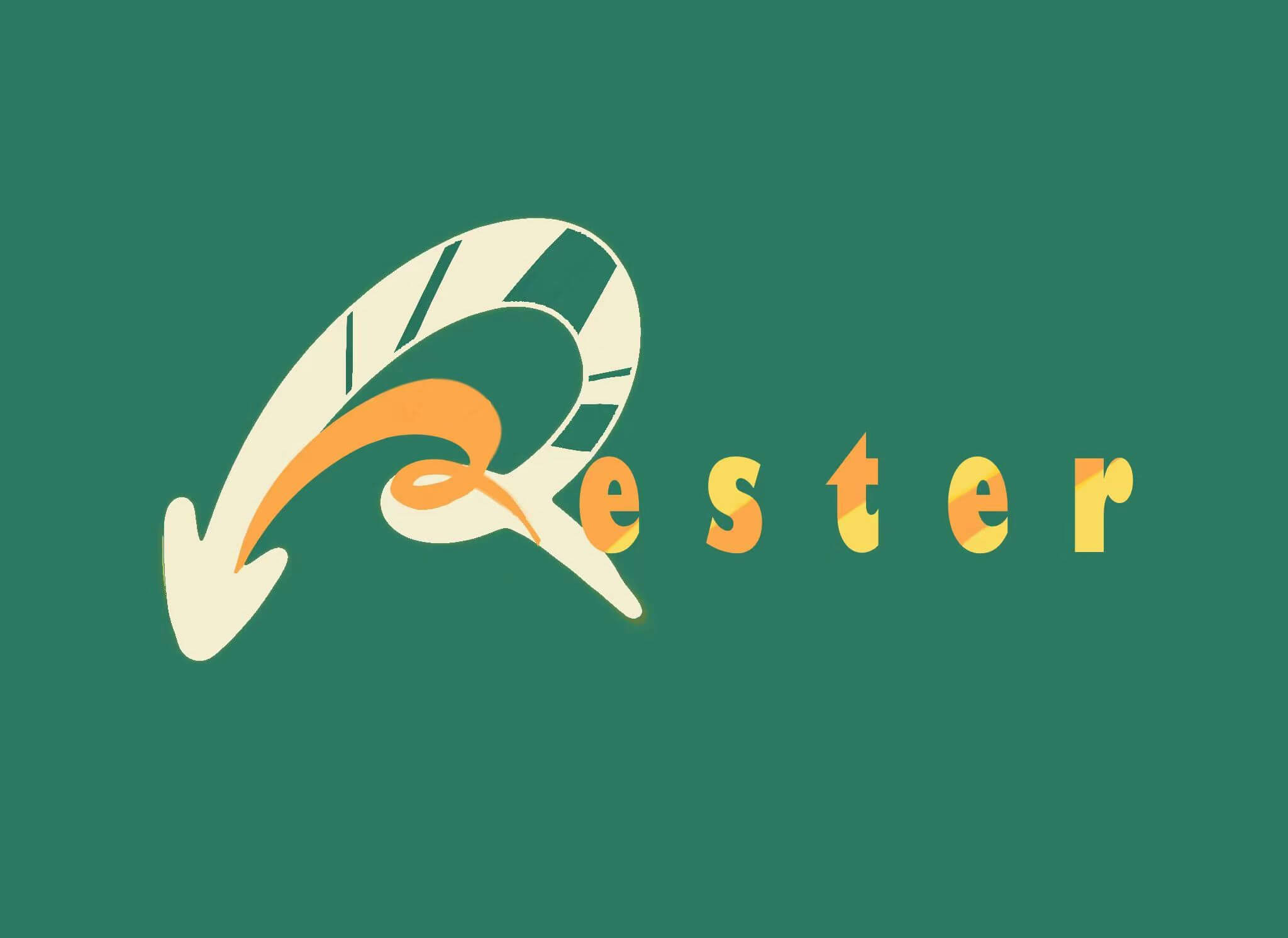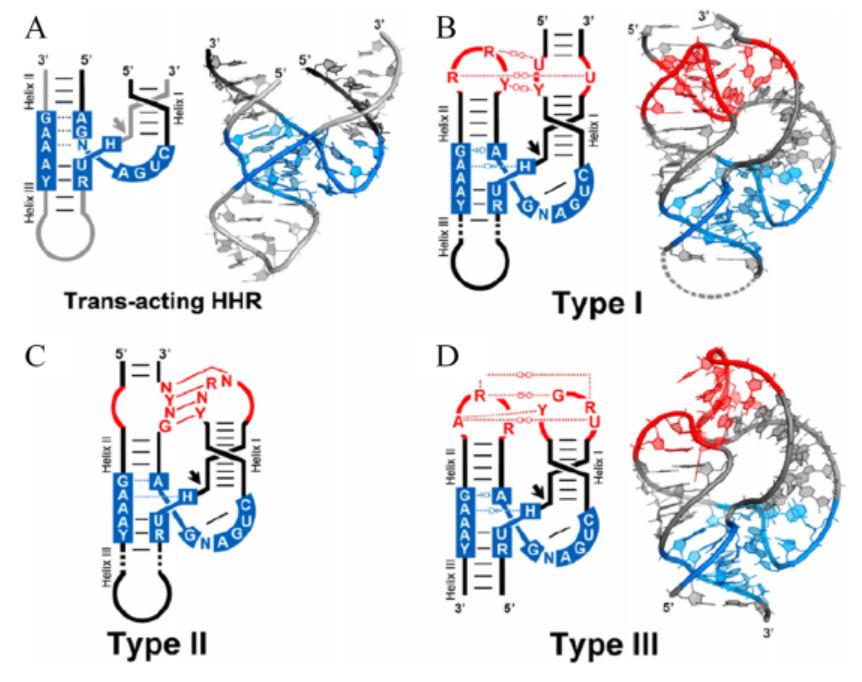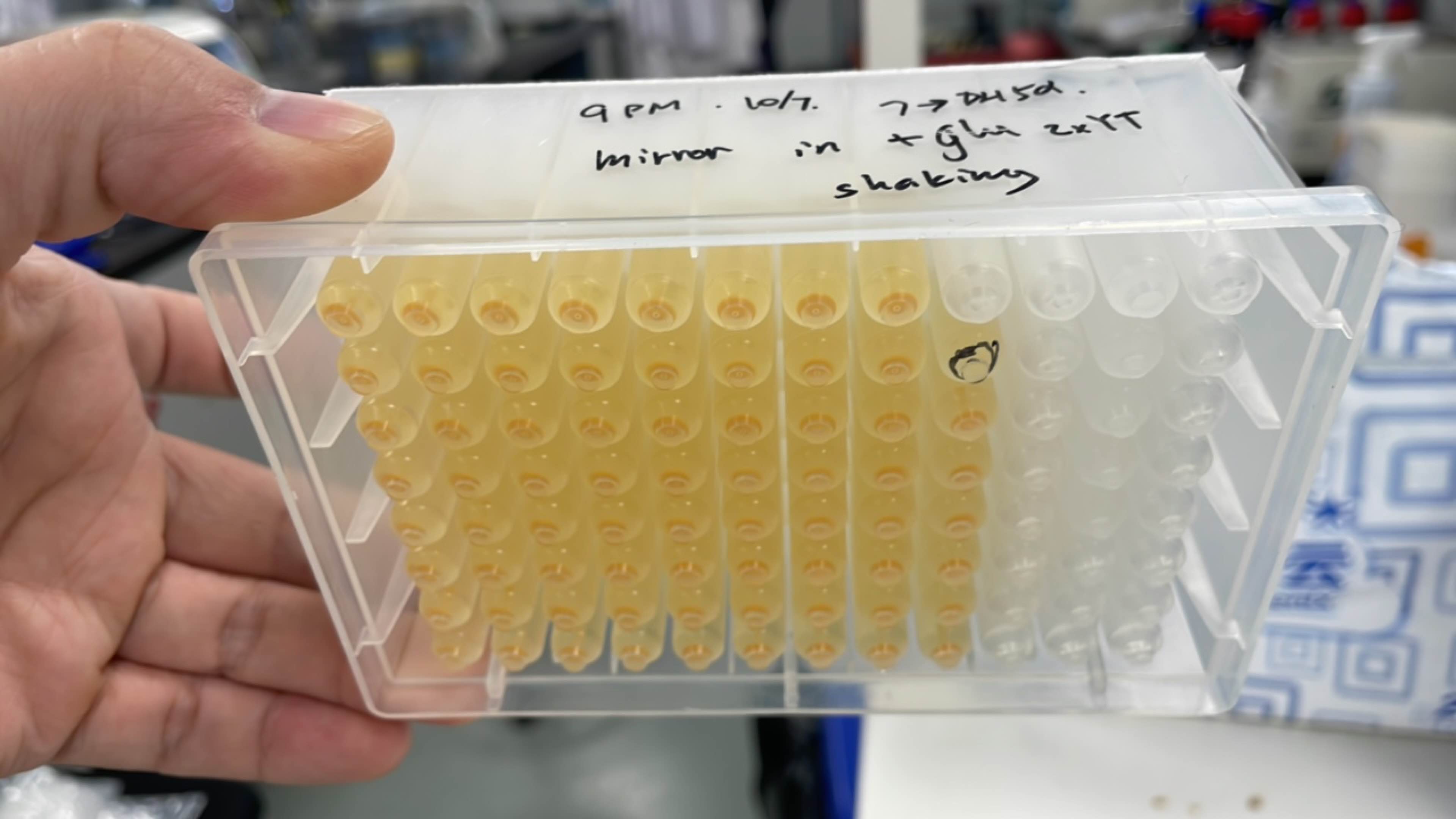Part:BBa_K4162005
Hammerhead ribozyme
Introduction
Hammerhead ribozyme was first found in the genome of viruses and viroids. It involved in the processing of RNA transcripts based on rolling-circle replication. The tandem copy of RNA sequence will be generated in the roll ring replication, and the self-cleaving activity of ribozyme can ensure the generation of RNA copy of unit length.[1]
The secondary structure of hammerhead ribozyme resembles a hammer. According to different open helix tips, hammerhead ribozymes can be divided into three types: TypeⅠ, Type II and Type III. The catalytic center of ribozyme consists of 15 highly conserved bases surrounded by three helixs(HelixⅠ, Helix II and Helix III). The long-range interaction between HelixⅠ and Helix II can help stabilize the conformation of the catalytic center of the enzyme and improve the catalytic efficiency (Figure 1).[2] While working, ribozymes utilize a network of defined hydrogen bonds, ionic and hydrophobic interactions to generate catalytic pockets, which capitalize on steric constraints to generate in-line cleavage alignments and general acid-base chemistry to catalyze site-specific cleavage of the phosphodiester backbone.[3]
Contents
Usage and Biology
We construct a ribozyme-assisted polycistronic co-expression system (pRAP) by inserting ribozyme sequences between CDSs in a polycistron. In the pRAP system, the RNA sequences of hammerhead ribozyme conduct self-cleaving, and the polycistronic mRNA transcript is thus co-transcriptionally converted into individual mono-cistrons in vivo. Self-interaction of the polycistron can be nullified and each cistron can initiate translation with comparable efficiency. Besides, we can precisely manage this co-expression system by adjusting the RBS strength of individual mono-cistrons. In our project, we used ribozyme to build our crtEBIY biobrick.
Characterization
Successful protein expression
As many researches indicate, the major problem of polycistronic vectors, which contain two or more target genes under one promoter, is the much lower expression of the downstream genes compared with that of the first gene next to the promoter[4]. The tail of the coding sequence (CDS) can interfere with the head of the ribosome binding site (RBS), which can hinder RBS from combining to ribosomes. Such shortage occurred when we assembled crtEBIY sequentially only to find incomplete expressions of our target proteins.
We first assemble four basic modules: BBa_K4162010(ribozyme + T7_RBS + crtE), BBa_K4162013(ribozyme + T7_RBS + crtB), BBa_K4162016(ribozyme + T7_RBS + crtI) and BBa_K4162019(ribozyme + T7_RBS + crtY). Next, we apply overlapping PCR to assemble composite modules which contain 2-3 random basic modules. Finally, we obtained several biobricks composed of four basic modules assembled in different orders. SDS-PAGE showed that the proteins in each module were successfully expressed and were intact proteins rather than short peptides after incomplete expression.


Stable expression level
定性2小结
定性3标题
定性3文字
[[|400px|thumb|none|Figure 3. 图标题. 图注 引用的不要忘了写某某人某某年的出处]]
定性3小结
Sequence and Features
- 10COMPATIBLE WITH RFC[10]
- 12COMPATIBLE WITH RFC[12]
- 21COMPATIBLE WITH RFC[21]
- 23COMPATIBLE WITH RFC[23]
- 25COMPATIBLE WITH RFC[25]
- 1000COMPATIBLE WITH RFC[1000]
References
- ↑ Ferré-D'Amaré, A. R., & Scott, W. G. (2010). Small self-cleaving ribozymes. Cold Spring Harbor perspectives in biology, 2(10), a003574. https://doi.org/10.1101/cshperspect.a003574
- ↑ Jimenez, R. M., Polanco, J. A., & Lupták, A. (2015). Chemistry and Biology of Self-Cleaving Ribozymes. Trends in biochemical sciences, 40(11), 648–661. https://doi.org/10.1016/j.tibs.2015.09.001
- ↑ Ren, A., Micura, R., & Patel, D. J. (2017). Structure-based mechanistic insights into catalysis by small self-cleaving ribozymes. Current opinion in chemical biology, 41, 71–83.
- ↑ Kim, K. J., Kim, H. E., Lee, K. H., Han, W., Yi, M. J., Jeong, J., & Oh, B. H. (2004). Two-promoter vector is highly efficient for overproduction of protein complexes. Protein science: a publication of the Protein Society, 13(6), 1698–1703.
| None |



